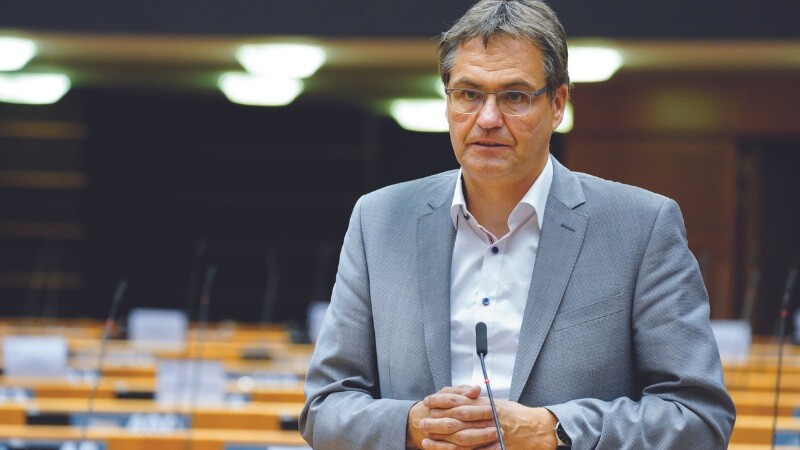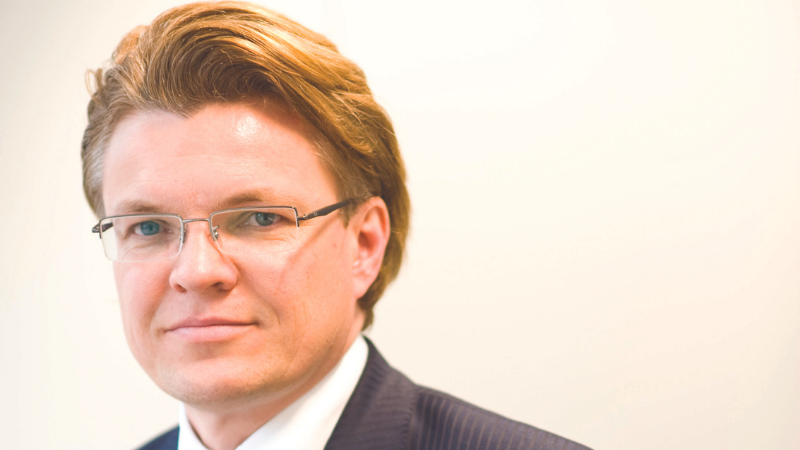Despite the agreement reach in Glasgow, Peter Liese believes how the EU’s Fit for 55 Package is implemented will be key to ensuring we reach the goal of carbon neutrality.
The outcome of the climate conference in Glasgow is overall positive. It is a great achievement that almost all major emitters have set themselves the target of achieving carbon neutrality. In the 2019 Climate Conference in Madrid, when EU leaders agreed Europe will become carbon neutral, following months of heavy pressure from the European Parliament, we were almost alone in the world. I would not have dared to dream that within two years so many other countries would follow. Therefore, it is a remarkable achievement that climate neutrality has now become the new normal in international climate change policy.
Since 2019, not only Japan, South Korea, the US and Australia have joined us, but also an emerging country like South Africa wants to be climate neutral by 2050. They should be the model for EU Member States like Poland, which have yet to decide to take this step themselves. It is also important to note that Russia and India have decided to become climate neutral even though their date is too late. The world’s problem child remains China that doesn’t want to be CO2-neutral before 2060. This is clearly too late, and the European Parliament emphatically demands that all climate gases such as methane are included in the target, as is the case with the other states.

“We must ensure we don’t deindustrialise Europe, but instead decarbonise European and international industry”
The glass is definitely more than half-full when we look at what has been achieved in Glasgow, but there is still a lot more to do. Not only do we have to ensure that states live up to their pledges, but we must accelerate the speed and ambition to change in the short-term. Otherwise, we will reach a point of no return and our children and grandchildren will suffer the horrific consequences of climate change. The 2030 ambitions of most parties are insufficient. Virtually no major emitter has positioned itself as ambitiously as the EU.
In implementing the Fit for 55 package, we must therefore pay much more attention to how we motivate others. Looking at the revision of the EU Emissions Trading System (ETS), there are different levers. For example, we want 50 percent of emissions from shipping to and from the EU to be covered by the ETS, and we need to motivate other partners to cover the remaining 50 percent. With a combination of free allowances and a Carbon Border Adjustment Mechanism (CBAM), we must ensure that we don’t deindustrialise Europe, but instead decarbonise European and international industry. I have had many interesting discussions on both points in Glasgow and have not experienced any open rejection from third countries. This is an important step forward.
We should not seal ourselves off from the rest of the world but work together with third countries on climate change solutions. However, the emission reduction targets presented are not enough. China in particular must do more, and with our Fit for 55 legislation we invite the world to join us in tackling the problem.
Sustainable steel production is key to Europe achieving global climate change leadership. Even if the decarbonisation of the industry is already under way, EUROFER’s Axel Eggert believes the recent COP26 agreement shows the need for the EU to further enhance its Fit for 55 Package.

With Europe a frontrunner in climate policy, it now has the opportunity to lead the global transition to a carbon neutral, circular, environmentally and socially responsible economy. How can this be achieved?
The conclusion of the COP26 and its outcomes where low carbon steel production took centre stage, point the way. Its Breakthrough Agenda included the aim of achieving near zero carbon emission steel by 2030, as the preferred choice in global markets, with the First Movers Coalition committing to buy it. This is also the centrepiece of the cautious agreement between the EU and US, sealed at the G20 by the Global Arrangement on Sustainable Steel and Aluminium.
The EU steel industry, represented by the European Steel Association (EUROFER), welcomes the COP26 conclusions as a step in the right direction to keep the Paris targets alive. We have already embraced the road to a carbon-neutral future: our ambition is to cut CO2 emissions by 55 percent by 2030 compared to 1990 levels and to ultimately reach climate neutrality by 2050. We are one the most innovative sectors, with more than one hundred projects developing breakthrough technologies to produce low carbon steel.
However, the EU Green Deal needs a proper toolbox to give CO2-neutral steel a genuine opportunity to succeed. The European institutions, and in particular the European Parliament, have a key role in ensuring the right conditions for creating lead markets and a level playing field for green steel within the Fit for 55 Package. Otherwise ‘dirty’ steel from third countries will continue to flood the EU market, while we strive to become the EU’s blueprint for industrial decarbonisation.
The first crucial step is securing the revision of the EU Emissions Trading System (ETS), and the introduction of the new Carbon Border Adjustment Mechanism (CBAM), to achieve the 2030 climate target in the most cost-efficient way, while also strengthening carbon leakage protection. The two provisions should be complementary in a WTO-compliant way.
The current EU ETS benchmark-based free allocation and indirect cost compensations – already now leading to an estimated annual direct cost for EU steel of €2.6 billion – should not be cut down even more before 2030, in order to ensure legal predictability and allow steelmakers to invest in their decarbonisation projects.
“The European institutions, and in particular the European Parliament, have a key role in ensuring the right conditions for creating lead markets and a level playing field for green steel within the Fit for 55 Package.”
The current European Commission’s proposal introduces a 10 percent annual free allocation phase-out for CBAM sectors with a downward revision of benchmarks. Under this scenario, such costs could increase exponentially to up to €14 billion per year in 2030 with current emissions levels, or to €8.5 billion even if the sector reduces emissions by 30 percent from now to 2030.
Without any proven effectiveness of the CBAM, the risk of carbon leakage will be too high: third country producers could circumvent the measure, for example by absorbing the CO2 charge or by source shifting. In addition, the Commission’s proposal does not offer any protection from carbon leakage to our 20 million tonnes of steel exports.
Low carbon technologies will require seven times more electricity than today. Therefore, providing access to affordable low carbon energy, in particular carbon neutral electricity and hydrogen, is equally important, accompanied by the necessary infrastructure. Supporting investment in low carbon technologies is also key.
The path to carbon-neutral steel is clear, but we need the EU at our side to fulfil our common commitments to global climate leadership. Steel can and should become the EU’s transition flagship, not collateral damage.

This content was commissioned by EUROFER and produced by Dods
Sign up to The Parliament's weekly newsletter
Every Friday our editorial team goes behind the headlines to offer insight and analysis on the key stories driving the EU agenda. Subscribe for free here.